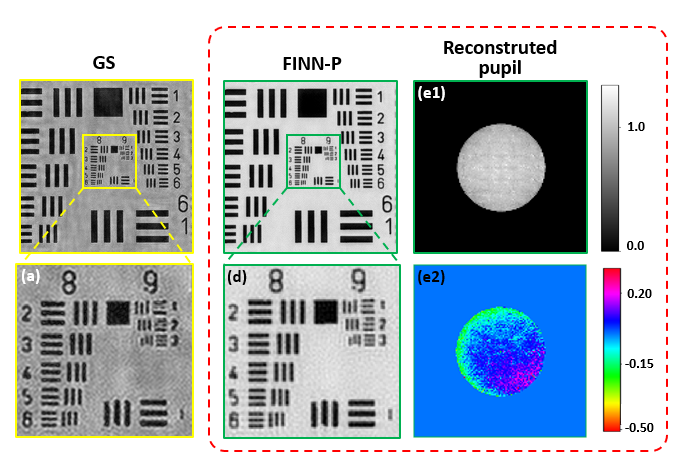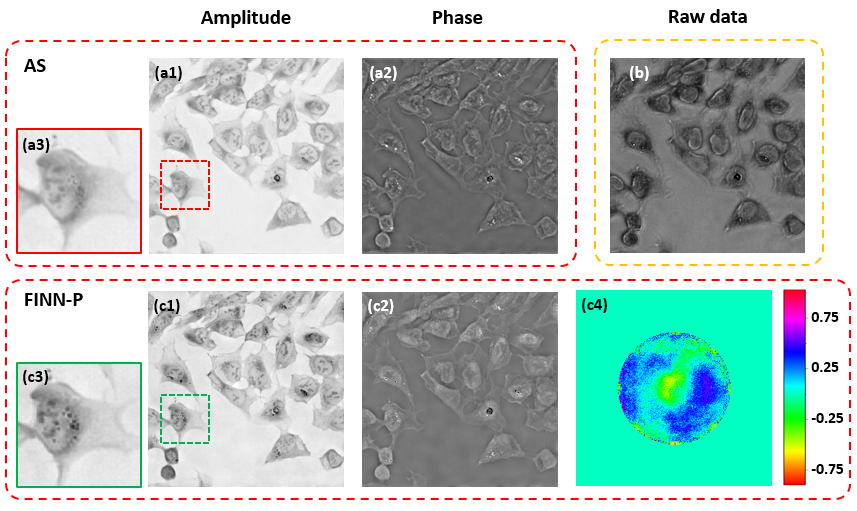Author: |
Traditional reconstruction algorithm of FPM, such as GS, AS, usually consider the transfer function of the system as the coherent transfer function (CTF) by default. However, due to partial coherence of the LED and the aberrations exist in the system, simple adoption of CTF as the transfer function will degrade the convergence and robustness of the algorithm, resulting in convergence error and low quality of the reconstructed images. This kind of problem is particularly noticeable at the edge field of view where the aberrations are non-negligible.
In order to solve this problem, the liquid crystal optical research group of CIOMP’s State Key Laboratory of Optics, proposed a reconstructed algorithm based on neural network which combines the recover process of the pupil function, called FINN-P. The algorithm can correctly recover the pupil function of the system and achieve better reconstruction results. In addition, the influence of the system aberrations and incoherence of the LED can be reduced, improving the robustness of the algorithm and solving the problem of convergence error at the edge field of view. After applying the algorithm to the USAF dataset and actual biological sample dataset, the quality of the reconstructed images has been significantly improved.
SUN Minglu , LI Dayu, MU Quanquan in the research group have published the related results with the title of ‘Neural network model combined with pupil recovery for Fourier ptychographic microscopy’ on Opt. Express, vol. 27, 24161-24174 (2019)

Reconstructed results on the USAF (Photo by CIOMP)

Reconstructed results on the actual biological sample (Photo by CIOMP)
